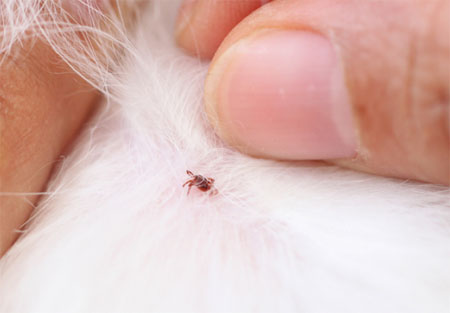 |
| DogIsGoing.com by Marie-Louise |
Tick Borne Disease Prevention
How can we protect ourselves, our dogs and other pets from tick bites?
Knowing the tick’s preferred habitat, careful inspection of yourself and your dog, and immediate removal and disposal of the parasite will help you to avoid contracting a bacterial infection or disease from a tick bite. We can learn to identify a tick habitat, even if we can’t always avoid them. When we’ve been out with our dogs, walking or trail running, mountain biking, or enjoying a BBQ in your yard, we need to think about giving ourselves a look over, and then our dogs, and maybe ourselves a second time before going back inside. When a tick does turn up, promptly remove it and dispose of it. A tick bite should be treated immediately with a topical antibiotic, rubbing alcohol, Neosporin, or Bactine.
Knowing where to find ticks, gives us the option to avoid them, or change their environment to something less livable for them. There are two classes of ticks, hard ticks and soft ticks. Hard ticks nest and lay eggs in leaf litter. That is the tall grass, and brush at the edge of the road, the lawn, a park or anywhere along a wooded trail. Keeping your lawn mown short, and dispose of your clippings properly will make less welcoming environment for ticks. Soft ticks will lay eggs in small spaces, like a seam in your dog kennel. Clean and disinfect any areas thoroughly and regularly to destroy potential tick eggs from hatching.
Unless we become hermits and avoid going outside ever, we are likely to find ourselves passing through locations that ticks are staking out looking for their next meal. Six legged ticks in the larvae stage are usually looking for a small host, like a rodent. Ticks aren’t selective and will latch onto whatever comes their way first. Look yourself over carefully and patiently. Make time to look over your dog, before you both go inside together. Keep a comb or brush handy for yourself and one for your dog, to help give a quick look through longer, fuller fur for anything that shouldn’t be there. I like the skinny little combs the school photographer used to give us on picture day, to comb through my dog’s fur. The comb is fine enough that it will catch a seed tick. When the parasite hasn’t bitten my dog, it will come out in the teeth of the comb. If the nasty bug has a hold of my dog, I leave the comb hung on the tick and pick up the tweezers.
Removing the parasite as soon as is safely possible is very important. The sooner the bug is removed, the less chance it has of infecting your dog or yourself with bacteria or disease. Add tweezers to your pet travel bag, or your glove box, or keep near the door to your home. Whatever type of tweezers is most comfortable for you to use, then those are the best. I have a few different types of tweezers. My first choice is a pair of carpenter tweezers, bought at the hardware store. They are small, and the end is cut at nearly a 45 degree angle. These tweezers are meant to pull splinters out of calloused hands, and are good to get close to the skin and pull the tick straight out. My second thought if I need tweezers, are my sewing machine tweezers. They are long, and the tip is very narrow and pointy for threading needles. They have an angled bend near the tips, and good for getting into small places, but they are very pointy. I also have Clamp Pliers. They look like a surgical tool, and can be pressed closed and will stay closed, so you can concentrate on pulling straight, knowing the clamp is secure on the tick. It also stays holding on while you find a disposal method. No more “oops, I dropped it”.
The life of a hard tick starts with eggs laid in tall grasses or leaf litter. The soft tick will lay her eggs in their hosts’ nest or burrow. The hatched six legged larvae latch onto a small animal host for a few days, and drops off to molt into the 8 legged nymph stage for 3 weeks. Looking like a small adult, the nymph finds and latches onto the next host to feed before releasing again, and becoming an adult. The adult tick finds a host to feed again before mating. Usually is bit in for 24 hours. The female becomes engorged, the male doesn’t get as large, the male dies after mating and the female will lay between 2,000 and 18,000 eggs before she dies.
There are many flea and tick treatment products. Some breeds of dogs have allergic reactions to some parasite treatments. It’s always best to refer to your pet’s veterinarian before selecting a product that would work best for you specific pet. |
